|
|
|
|
|
|
|
|
|
Compare our replica and her prototype -- sewn shnjaka in Oslo maritime museum.
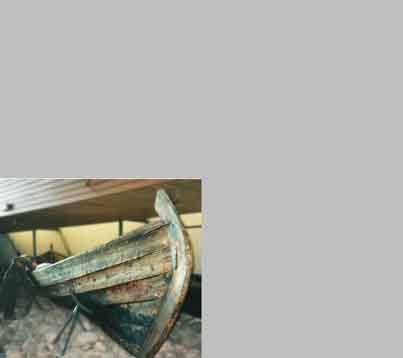
Full scale version (58Kb) She is a big sea-going boat (some 12m long) from Murmansk or Kola area, built as late as 1905. The origin of the word "shnjaka" seems to be very old, middle-sized ships were called "snäka" or "shneckja" in Viking age. This word was probably adopted by Pomors from old Norwegian language, or carried over from Vikings - Varyags of Novgorod and survived for some 900 years in the isolated areas of Kola peninsula and White sea coast. exhibited in Oslo maritime museum, (Sjofartsmuseum), Norway. |
|
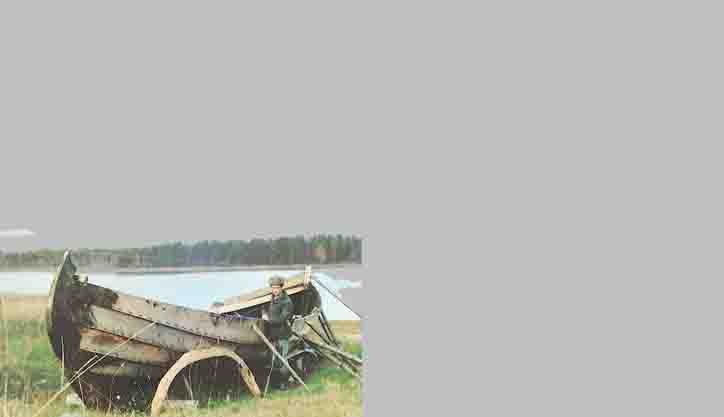 Full scale version (52Kb)
Full scale version (52Kb)Hull of the replica nearly done. October 2002. | |
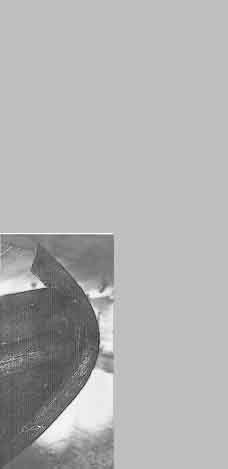
Full scale version (29Kb) Prow of the shnjaka exhibited in Oslo Sjofarsmuseum. |
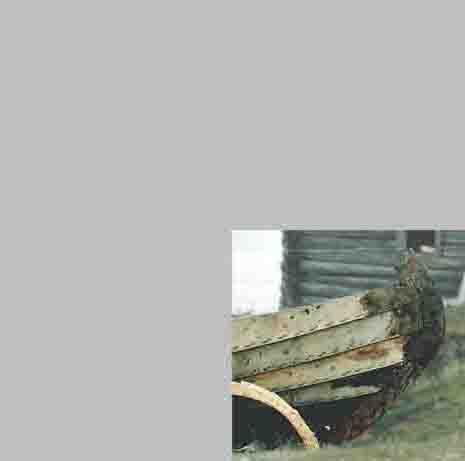
Full scale picture (37Kb) Prow of the replica we build, October 2002. |
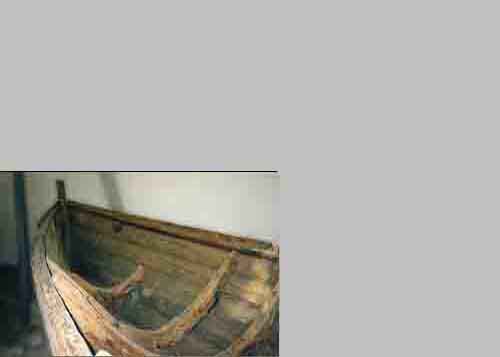
Full scale picture (30Kb) Sewing technique was used only for the seams between the strakes, ribs were treenailed, and this shnjaka also had some iron nails in stems and hood ends of the planking. Later it underwent a total repair, when most sewing material -- hemp(?) twines was taken out of the holes, and iron nails where put to hold the seams instead of sewing. Some sewing holes were then stopped with new wooden plugs. |
|
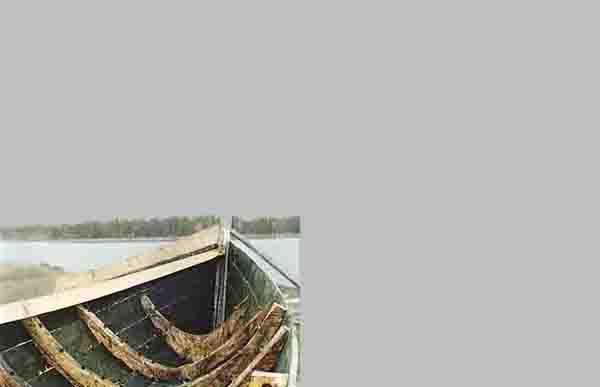 Full scale picture (48Kb)
Full scale picture (48Kb)Inside view of the replica's aft. October 2002. |
|
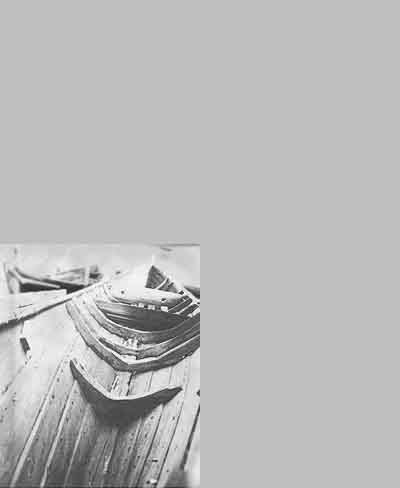
Full scale picture (50Kb) Inside of the Murman coast shnjaka in Oslo. |
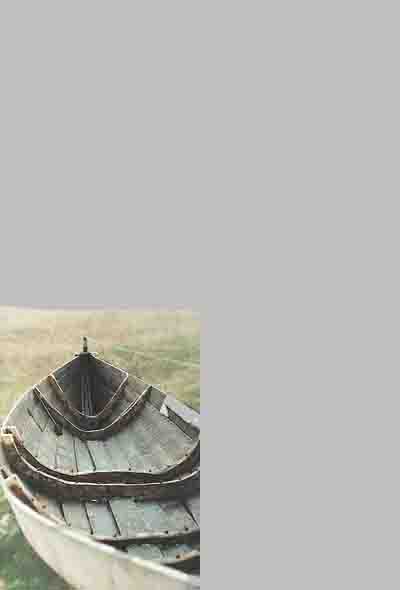
Full scale version(46Kb) Inside of the replica. One rib ("opruga"), the bulkheads, and gunwales are missing yet. October 2002. |
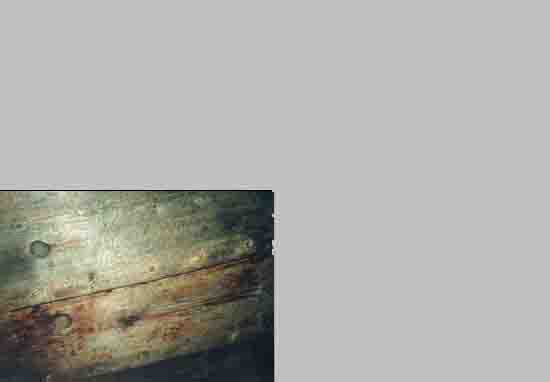 Full scale picture (29Kb)
Full scale picture (29Kb)Although now it is, in fact, a metal-nailed and tree-nailed ship, but all the arrangement of sewing holes and grooves is clearly visible. The sewing thread was some sort of hemp(?) cord. Then, different kinds of available-on-the-spot materials could be used for repair -- root withies sewn ship could be repaired with pieces of hemp twines, etc. |
|
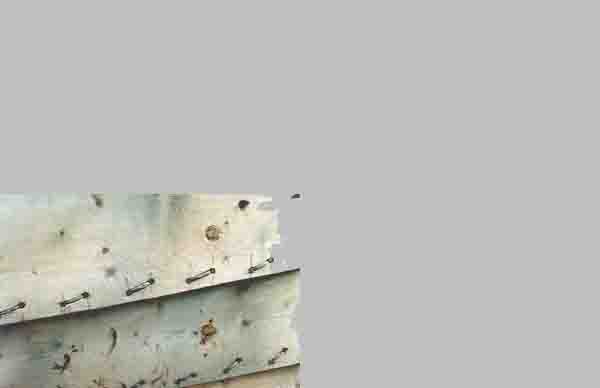 Full scale picture (43Kb)
Full scale picture (43Kb)Seams of the replica. Spruce roots some 8-12mm thick, were twisted like a withy for the sewing material. Just as on the picture above, two treenails are visible, they fasten planking to a rib. October 2002. |
|
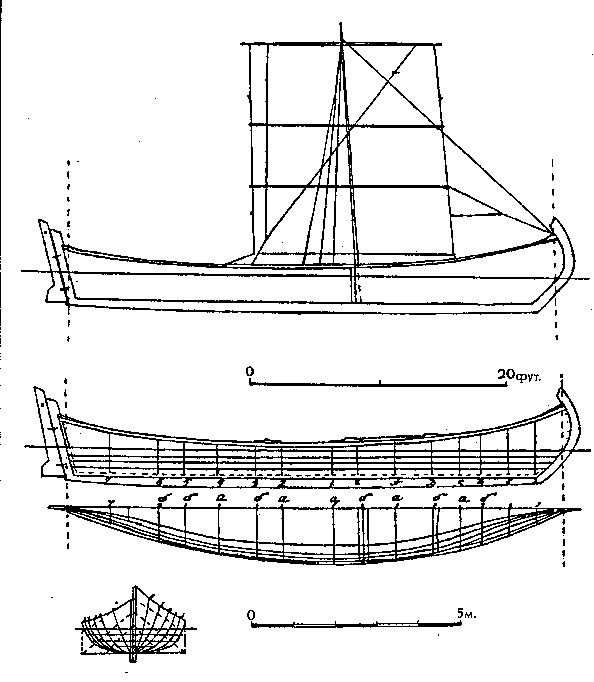 Late 19th century shnjakas generally carried one mast with square sail (sometimes they had additional masts), and were steered by a stern rudder. They had also oars, usually 3 pairs of them. Their crew commonly consisted of 4 people. To the left - the drawing was made in 1897 when building a shnjaka in Kem, White sea coast, and published in the "Russian Navigation" magazine. Common shnjaka dimensions were: length - 8-14m; width - 2-2.7m; draft - 0.5-0.7m; load/displacement - 2.5-8tons;
Below - drawing of the shnjaka in Oslo Sjofartsmuseum. The ship's length - 11.38 meters, width - 2.65m, depth - 0.845m. |
|
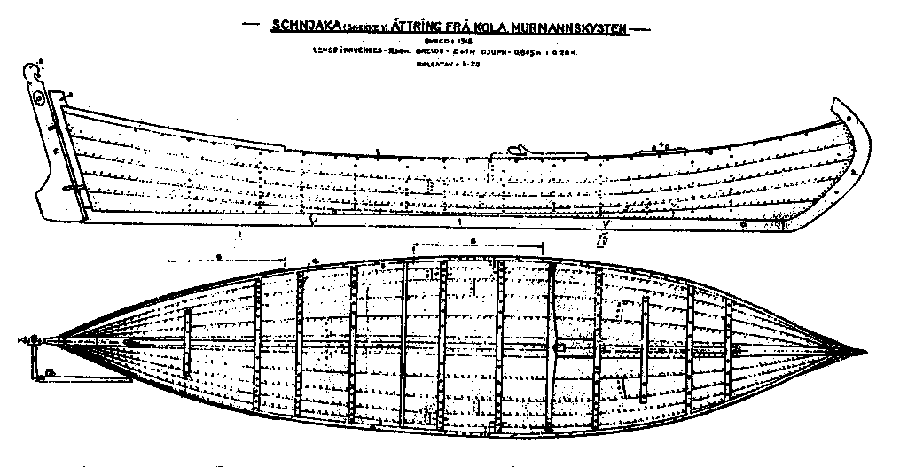
|
|
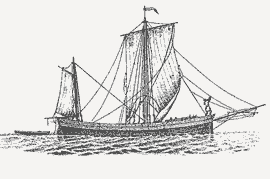 Drawing of mid 19th century shnajka by Paul Bogoslavsky, 1858. Seems that shnjakas then were quite different from what we know about late 19th century. |
|
|
|
|
|
|
|
|
|
|
last update: February 2006 report problems with this page to ![]()